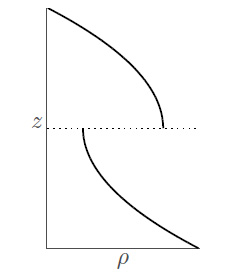Mixing Physics: Rayleigh-Taylor Instabilities
Often, complex fluid dynamics happens right before our eyes, but it doesn’t always easily reveal itself. With the aid of dye and high-res video, two physicists from Cambridge University have revealed some beautiful complexities behind a fluid process discovered centuries ago: Rayleigh-Taylor instability.
When a fluid rests atop another fluid with less density, this instability arises. Consequently, the less dense fluid underneath starts moving upward, mixing with the denser fluid.
For instance, this can happen when denser salt water sits on top of fresh water. This process, however, can be hard to see without some help.
That’s why Cambridge scientists Megan S. Davies Wykes and Stuart B. Dalziel used a green dye to show this process in action. You can see it for yourself in the video below.
Video Credit: Megan S. Davies Wykes and Stuart B. Dalziel, DAMTP, University of Cambridge, UK

Height (y-axis) vs initial density (x-axis) for the second experiment.
Image Credit: Megan S. Davies Wykes and Stuart B. Dalziel, DAMTP, University of Cambridge, UK.
At first, the research team separated the two fluids with a stainless steel barrier. Upon releasing the barrier, the instability causes the two fluids to mix.
In the first case shown in the video, both water solutions had uniform density before the mixing commenced. Although the two fluids had different densities, their respective densities were the same throughout their tanks initially.
The second version of the experiment, however, was more complex. The starting fluids had densities that varied with height, as seen in the image to the left. Higher levels in each section of the tank had less dense versions of the respective fluids.
When the scientists released the barrier, mixing still happened. But stratifying the initial density slowed down the mixing significantly, as shown in the video. Regardless, it still looks beautiful.
Rayleigh-Taylor instabilities show up in many different applications aside from awesome physics videos, such as astrophysics, fracking, and even art. Anytime there's a battle between fluid densities, this instability will be there.
More Information
- Physics+ article covering Rayleigh-Taylor instabilities in artwork
- Original research article for the video
—Brian Jacobsmeyer














